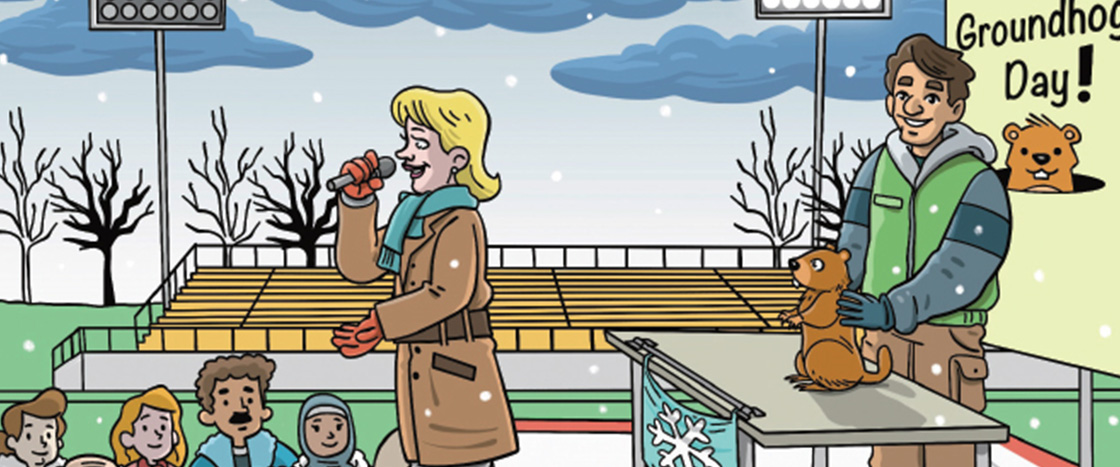Shivering, Julie climbed the bleachers and sat next to her friend Jason. They were at the school stadium to watch their friend Sadie play in her soccer game. It was evening, but the field was brightened by tall stadium lights.
“It’s so cold!” Jason said.
“Yeah, I can’t wait for winter to end,” said Julie.
“Not me,” said a voice behind them. It was their classmate Miles. “I love winter!”
“We might find out tomorrow how long winter will last,” said Jason. Miles looked puzzled.
“It’s Groundhog Day!” Julie said. “There’s going to be an event here.”
“I can’t wait to see Gordy the groundhog!” said Jason.
Suddenly, the crowd cheered. Sadie’s team had scored! Jason squinted at the scoreboard. “Those lights are so bright!”
“I learned on a tour that each light has 24 bulbs,” said Miles.
“I wish I had sunglasses!” said Jason. He watched the game with a hand shielding his eyes.

